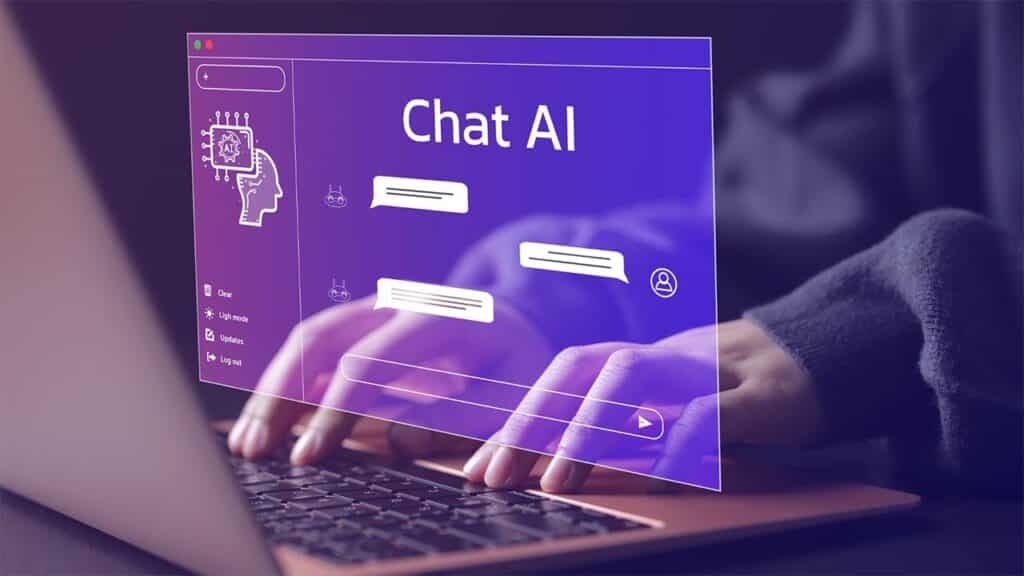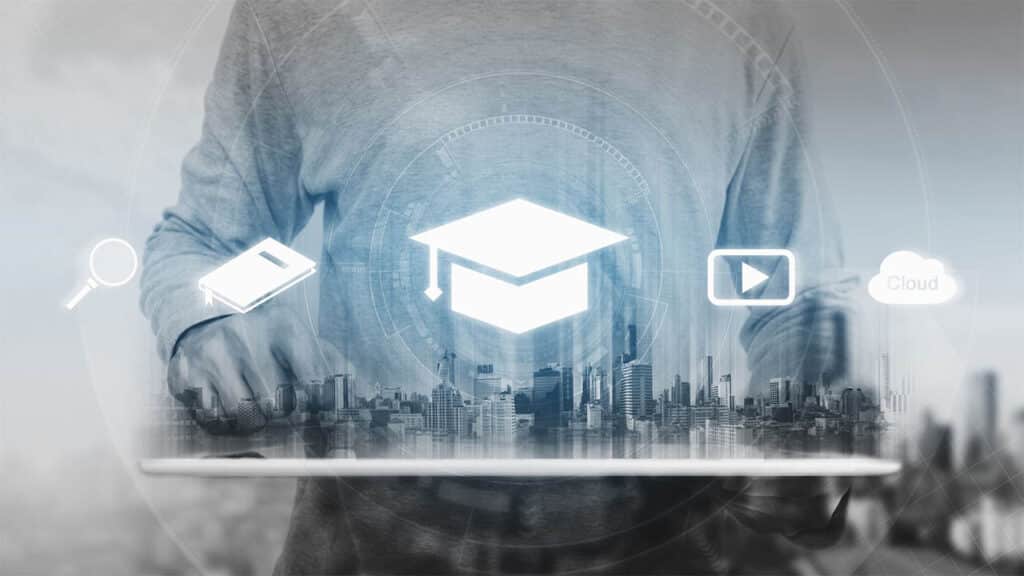Artificial Intelligence (AI) is transforming numerous sectors, and education is no exception. With the rise of e-learning and the increasing demand for personalized, efficient, and scalable learning solutions, AI is now a fundamental part of the education landscape.
From adaptive learning systems to virtual tutoring and AI-driven analytics, these technologies are reshaping the way students learn and teachers teach.
This article explores 12 key AI applications in education and e-learning, showing how AI is enhancing the learning experience for students, educators, and institutions alike.
1. Adaptive Learning Systems
What Are Adaptive Learning Systems?
Adaptive learning systems are AI-driven platforms that adjust content delivery according to each student’s performance and learning pace. These systems analyze data on how students interact with content and dynamically modify lesson plans to meet individual needs.
Key Benefits:
- Personalized Learning Paths: Each student receives a unique learning experience, progressing at their own pace. These systems ensure that students who need more time with a concept can take it, while those ready to move forward can do so without waiting.
- Identifying Learning Gaps: Adaptive learning systems pinpoint where students struggle and provide extra support through customized exercises or additional resources.
Examples in Use:
Platforms like DreamBox, Smart Sparrow, and Knewton use adaptive learning technologies to personalize lessons in subjects like math, science, and language arts.
These platforms analyze student performance and adjust content in real time, allowing for continuous, data-driven instruction.
2. AI-Powered Tutoring Systems
What Are AI-Powered Tutoring Systems?
AI-powered tutoring systems are virtual tutors that guide students through subject material, offering explanations, answering questions, and providing feedback tailored to the learner’s needs.
Key Benefits:
- 24/7 Availability: Students can access tutoring support anytime, reducing the need to wait for a teacher’s availability. This flexibility is especially helpful for e-learners or students in different time zones.
- Personalized Feedback: AI tutors analyze each student’s progress and learning style, offering tailored suggestions and explanations to reinforce concepts.
Examples in Use:
AI-powered tutoring platforms like IBM Watson Tutor and Squirrel AI provide assistance in various subjects, including mathematics, science, and language learning. These systems continuously monitor student progress and adapt instruction based on performance data.
3. Automated Grading and Assessment
What Is Automated Grading?
AI-powered grading systems automate the assessment of assignments, tests, and quizzes, freeing up time for educators to focus on student engagement and personalized instruction.
Key Benefits:
- Increased Efficiency: Automated grading tools can quickly evaluate large volumes of work, ensuring prompt feedback for students. This is particularly beneficial for large classrooms and online courses with hundreds of students.
- Objective Evaluation: AI can reduce the biases that sometimes occur in manual grading, ensuring consistency and fairness across assessments.
Examples in Use:
Platforms like Gradescope and EdX employ AI to grade a variety of assessments, from multiple-choice tests to complex essays and coding projects
These systems also provide feedback, helping students understand their mistakes and improve.
4. Personalized Learning Experiences
What Is Personalized Learning?
Personalized learning is the process of customizing educational content and instruction to meet the unique needs of each student.
AI facilitates personalized learning by analyzing individual student data, including their strengths, weaknesses, interests, and learning patterns.
Key Benefits:
- Tailored Learning Paths: AI-driven platforms create learning paths that adapt to a student’s pace and preferences, increasing engagement and improving learning outcomes.
- Support for Diverse Learners: These systems make it easier for educators to cater to students with varying levels of ability, learning styles, and backgrounds, allowing for more inclusive education.
Examples in Use:
AI-based platforms like Coursera and Duolingo personalize the learning experience by recommending specific lessons, courses, or language exercises based on a learner’s progress and goals.
As students advance, the system adjusts content to match their level of understanding.
5. AI-Enabled Chatbots for Student Support
What Are AI Chatbots?
AI chatbots are virtual assistants that help students by answering questions, guiding them through the learning platform, and providing administrative support, such as handling enrollment queries or course scheduling.
Key Benefits:
- Instant Response: Chatbots offer immediate support, allowing students to receive answers to their questions at any time without waiting for a teacher or administrator.
- Scalability: For educational institutions, AI chatbots can handle large volumes of repetitive queries, reducing the administrative burden and freeing up staff for more complex tasks.
Examples in Use:
Chatbots like AdmitHub and Ivy.ai are widely used in higher education to provide 24/7 support. These bots answer common questions about course offerings, deadlines, and procedures, streamlining student inquiries and improving satisfaction.
6. AI-Driven Content Creation
What Is AI Content Creation?
AI tools are being used to create educational content, including quizzes, personalized textbooks, and interactive learning materials.
These tools can generate content that meets curriculum requirements and adapts to the specific needs of learners.
Key Benefits:
- Time Savings for Educators: AI helps teachers and course creators save time by automating the generation of worksheets, quizzes, and multimedia content, which allows them to focus more on student interaction.
- Customizable Materials: AI can create dynamic and interactive learning materials that cater to individual learning preferences, helping students engage with the content in ways that suit them best.
Examples in Use:
Platforms like Content Technologies, Inc. use AI to generate personalized textbooks and other resources tailored to individual learners’ progress and needs.
This automation helps educational institutions scale content creation while maintaining quality.
7. Predictive Analytics in Student Performance
What Is Predictive Analytics?
Predictive analytics in education refers to the use of AI tools to analyze student data, predict future performance, and identify students who may need additional support.
Key Benefits:
- Early Intervention: Predictive analytics help educators identify students who are at risk of failing or dropping out, allowing them to provide timely interventions.
- Improved Retention Rates: By understanding which students need extra help, institutions can focus resources on improving student retention and success.
Examples in Use:
Tools like Civitas Learning use predictive analytics to track student engagement, attendance, and academic performance, helping teachers and administrators identify patterns and take action before students fall behind.
8. AI for Language Learning and Translation
What Is AI in Language Learning?
AI-powered tools offer personalized language learning experiences and real-time translation services, helping students learn new languages more efficiently and at their own pace.
Key Benefits:
- Real-Time Feedback: AI provides immediate corrections and suggestions, making language learning more interactive and adaptive to a learner’s proficiency level.
Adaptive Learning Paths: Language learning platforms adapt to students’ progress, ensuring that they are always learning at a suitable difficulty level.
Examples in Use:
Platforms like Duolingo use AI to tailor language lessons to each student’s progress, offering personalized feedback and adjusting difficulty as learners advance.
Google Translate leverages AI for real-time translation, allowing students to communicate across languages seamlessly.
9. AI-Powered Proctoring and Exam Monitoring
What Is AI Proctoring?
AI-powered proctoring systems are used to monitor students during exams, ensuring the integrity of the testing process in online and remote environments.
Key Benefits:
- Cheating Prevention: AI proctoring systems detect suspicious behavior, such as looking away from the screen or using unauthorized materials, reducing the likelihood of cheating.
- Scalability: AI-driven proctoring allows institutions to conduct secure exams for large numbers of students without the need for physical invigilators.
Examples in Use:
Platforms like ProctorU and Examity use AI to monitor students during remote exams, ensuring academic integrity by flagging unusual behavior or movements during the test.
10. AI for Accessibility in Education
What Is AI for Accessibility?
AI tools enhance accessibility for students with disabilities, offering features such as speech-to-text, text-to-speech, and predictive text, making education more inclusive.
Key Benefits:
- Increased Accessibility: AI provides assistive technologies that cater to students with visual, hearing, or cognitive impairments, ensuring that they can access educational materials in ways that suit their needs.
- Equal Learning Opportunities: By offering tools that adapt to individual needs, AI helps create a more inclusive learning environment where all students can thrive.
Examples in Use:
Tools like Microsoft’s Seeing AI and Otter.ai provide speech recognition, real-time transcription, and other assistive technologies that make learning more accessible for students with disabilities.
11. AI-Enhanced Collaborative Learning Platforms
What Is AI Collaborative Learning?
AI-driven collaborative learning platforms facilitate group work and peer discussions by tracking contributions, recommending resources, and enhancing interaction between students.
Key Benefits:
- Enhanced Group Collaboration: AI tools track individual contributions in group projects, ensuring that all members participate equally and receive appropriate feedback.
- Resource Recommendations: AI-powered systems suggest relevant resources for group discussions, helping students collaborate more effectively and stay focused on their objectives.
Examples in Use:
Platforms like Slack and Google Workspace are enhanced with AI features that facilitate collaborative learning, tracking engagement, and ensuring each team member’s contributions are acknowledged.
12. Virtual Classrooms and
AI-Driven Learning Analytics
What Are Virtual Classrooms with AI?
AI-enhanced virtual classrooms offer data-driven insights on student engagement, participation, and performance in real time, enabling teachers to adjust their teaching strategies for better outcomes.
Key Benefits:
- Real-Time Analytics: AI analyzes student performance during virtual lessons, helping educators identify when students are struggling and providing timely feedback to improve learning outcomes.
- Scalable Personalized Learning: AI algorithms in virtual classrooms make it possible to offer personalized learning experiences to large groups of students, allowing for customized instruction even in remote settings.
Examples in Use:
Platforms like Blackboard and Canvas use AI to track student progress, participation, and performance, offering data-driven insights that help teachers optimize their instructional methods.
Conclusion
AI is revolutionizing education and e-learning, providing tools that make learning more personalized, efficient, and accessible. From adaptive learning systems and AI-powered tutoring to predictive analytics and automated grading, AI is enabling students to achieve better outcomes while reducing the administrative burden on educators.
As AI continues to evolve, we can expect even more sophisticated applications in education, including fully personalized learning experiences, more accurate predictive models, and enhanced accessibility for students with disabilities.
AI has the potential to democratize education, making quality learning accessible to students worldwide. By embracing these technologies, educators can ensure they are preparing students not just for academic success, but for the future of work in an increasingly AI-driven world.












































